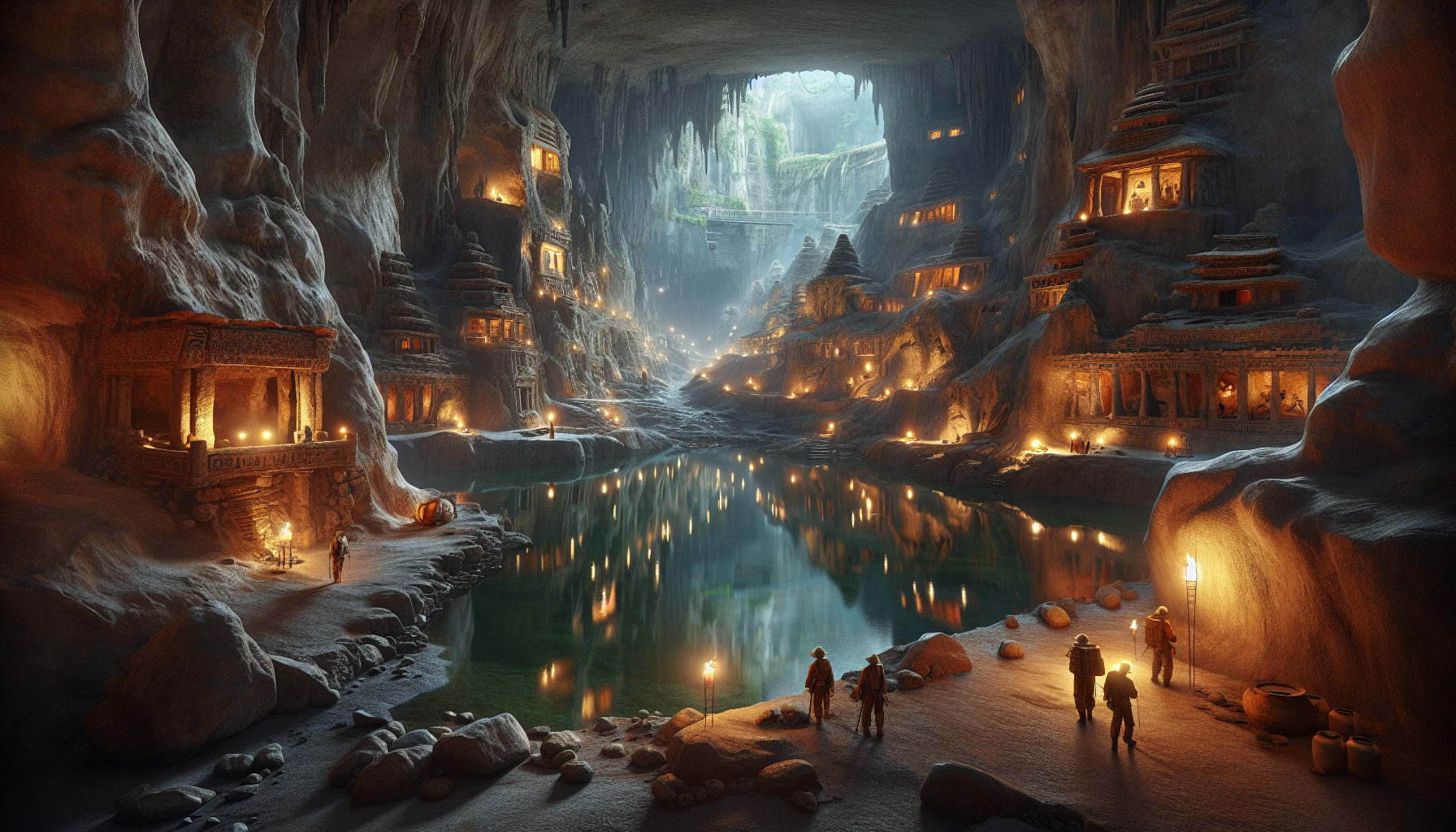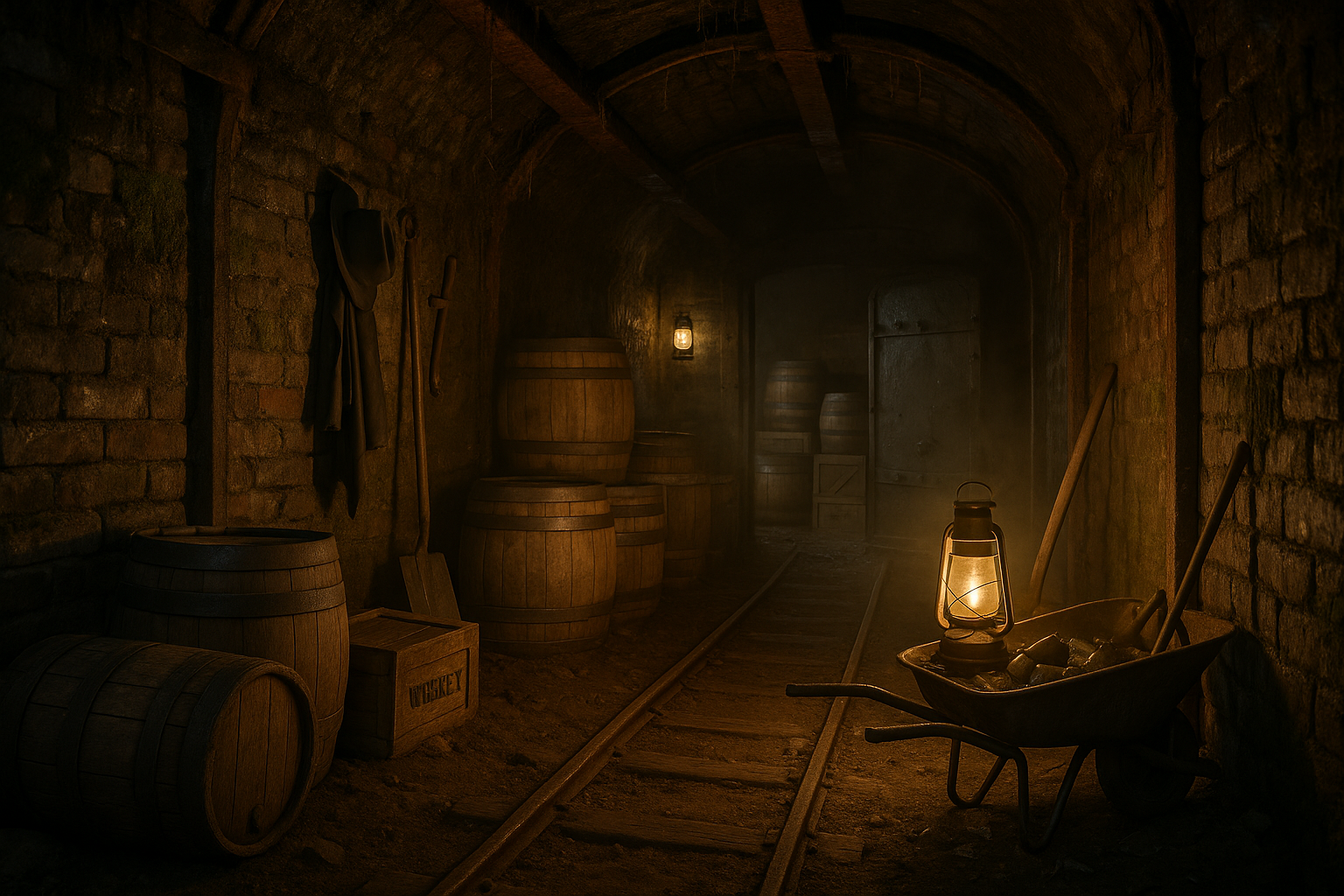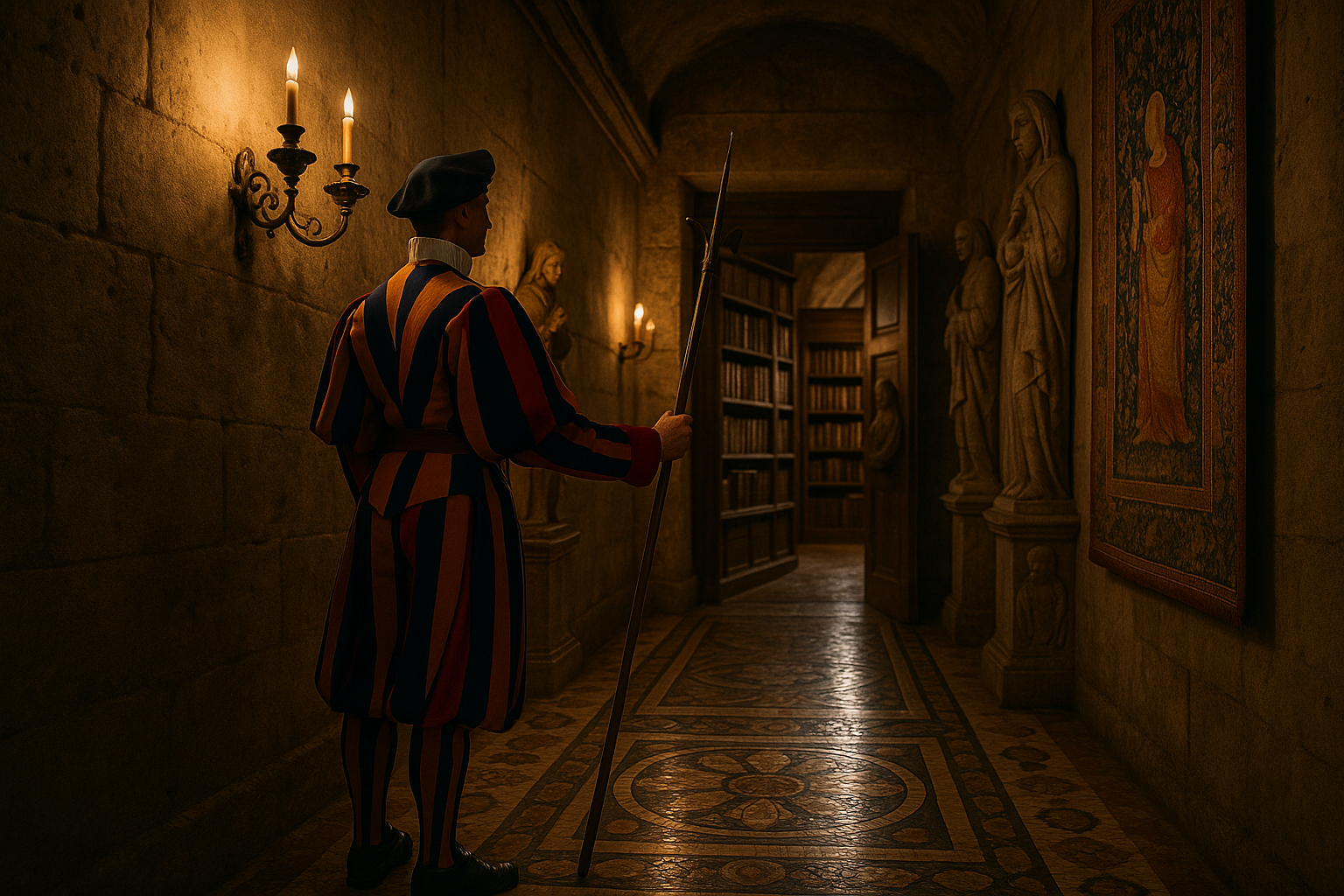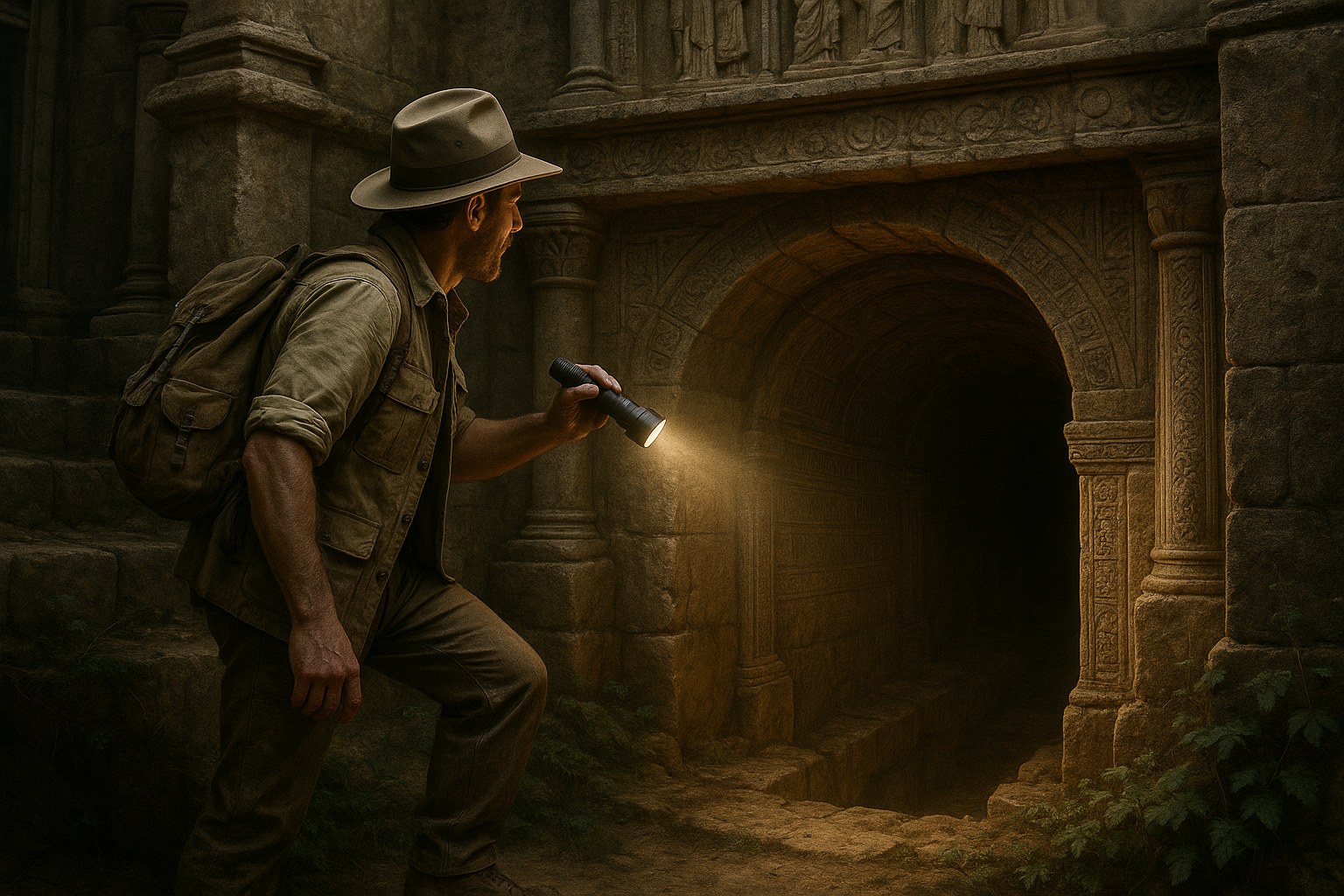In the vast tapestry of human history, there are chapters that are written not on the surface of the earth, but deep beneath it. These subterranean passages and chambers, carved meticulously over centuries, tell stories of innovation, survival, and mystery. Cave cities, the hidden wonders of our planet, are more than just geological formations; they are ancient shelters that have provided refuge, comfort, and a sense of community for countless generations. As we embark on a journey to uncover these marvels, we will delve into the intricate designs, historical significance, and the enigmatic allure that these underground worlds hold.
Imagine stepping into a realm where sunlight becomes a rare visitor, where the silence is profound, and the air carries whispers of antiquity. Cave cities are not mere curiosities; they are testaments to human ingenuity and adaptability. From the sophisticated networks of Derinkuyu and Kaymakli in Turkey, which housed thousands of inhabitants, to the serene beauty of China’s Longyou Caves, each location presents a unique tapestry of life beneath the surface. These subterranean cities were designed with precision, featuring ventilation systems, water channels, and communal spaces that demonstrate an advanced understanding of architecture and urban planning long before modern engineering came into existence.
The allure of these ancient underground shelters extends beyond their architectural brilliance. They are rich with stories of the people who inhabited them, their cultures, beliefs, and the mysteries they left behind. Who were the architects of these cave cities? What drove entire communities to carve their lives into the heart of the earth? In exploring these questions, we will delve into the historical contexts and the environmental or political pressures that might have led to the construction of such intricate dwellings. We will also examine the myths and legends associated with these places, some of which suggest that these cities were built as protection against invasions, while others speak of celestial guidance and supernatural influences.
As we peel back the layers of these subterranean sanctuaries, we will also confront the modern-day challenges they face. Preservation of these ancient sites is paramount, as they offer invaluable insights into our past. Yet, they are threatened by natural decay and human interference. Through this exploration, we aim to foster a greater appreciation for these cave cities, emphasizing the importance of safeguarding them for future generations. Join us as we embark on this fascinating exploration, where each step taken underground unravels a piece of history, a glimpse into the lives of our ancestors, and the timeless beauty of the hidden wonders that lie beneath our feet. 🌍🔦
The Enigmatic Allure of Cave Cities
When we delve into the depths of the Earth, we find a captivating world that has sheltered humans for thousands of years. Cave cities, carved into mountains and cliffs, offer us a unique glimpse into the past, where ancient civilizations thrived away from the surface. These subterranean marvels are not just mere refuges but sophisticated habitats that demonstrate the ingenuity and adaptability of our ancestors. From the Cappadocia region in Turkey to the Cliff Dwellings of the Ancestral Puebloans in North America, these hidden wonders hold secrets that continue to fascinate archaeologists and historians alike.
Exploring cave cities is like stepping into a time capsule. These structures were intricately designed to serve various purposes such as living quarters, storage spaces, and even places of worship. The very architecture of these cities reflects the socio-cultural dynamics of the civilizations that inhabited them. The troglodyte dwellings in Matmata, Tunisia, for example, offer a glimpse into the Berber culture and their adaptation to the harsh desert climate. Meanwhile, the underground cities of Derinkuyu and Kaymakli in Turkey illustrate the complex defensive strategies employed against invasions.
Moreover, the study of cave cities is not only about uncovering historical narratives but also understanding environmental adaptations. These ancient habitats provide insights into sustainable living practices that are relevant to modern times. As the world grapples with climate change, there is much to learn from the resourceful use of natural materials and the energy-efficient designs of these underground settlements.
Exploring the Architectural Marvels of Cave Cities
The Ingenious Design of Underground Habitats
The architecture of cave cities is a testament to the human capacity for innovation and resilience. These subterranean structures were meticulously planned to make use of natural geological features. The intricate network of tunnels, rooms, and passageways reflects a high level of engineering prowess. In many cases, these cities were equipped with ventilation shafts, water channels, and storage facilities, showcasing advanced knowledge of environmental management.
The underground city of Derinkuyu in Cappadocia is a prime example of this architectural genius. With its 18 levels descending over 200 feet into the ground, Derinkuyu could accommodate thousands of people along with their livestock and provisions. The city was equipped with a sophisticated ventilation system, ensuring a continuous supply of fresh air. Such features highlight the strategic planning involved in constructing these hidden refuges.
In contrast, the rock-hewn churches of Lalibela in Ethiopia reveal a different aspect of cave architecture. Carved directly out of volcanic rock, these monolithic structures stand as a testament to spiritual devotion and architectural mastery. Each church is intricately decorated with carvings and frescoes, reflecting the religious significance and artistic expression of the time. These sites continue to be places of pilgrimage, drawing visitors from around the world who marvel at their enduring beauty.
Cultural Significance and Historical Insights
Cave cities are not only architectural wonders but also cultural treasure troves. They provide invaluable insights into the daily lives, beliefs, and social structures of ancient civilizations. The artifacts discovered in these cities, from pottery to tools, offer clues about the trade, economy, and interactions of the people who inhabited them.
The Ancestral Puebloans, who built the cliff dwellings at Mesa Verde, left behind a legacy of intricate stonework and kiva structures used for religious ceremonies. The petroglyphs and pictographs found in these dwellings are rich with symbolism, shedding light on the spiritual beliefs and cosmology of these early inhabitants.
Similarly, the cave temples of Ajanta and Ellora in India stand as monumental achievements of Buddhist, Hindu, and Jain art and architecture. The elaborate carvings and murals depict stories from religious texts, offering a glimpse into the cultural and spiritual life of ancient India. These sites continue to be celebrated for their artistic and historical significance, attracting scholars and tourists alike.
The Mystery and Science of Cave Cities
Unraveling the Secrets of Ancient Engineering
The construction of cave cities poses intriguing questions about the engineering techniques and tools used by ancient builders. The precision with which these structures were carved out of solid rock suggests a deep understanding of geology and craftsmanship. Modern archaeologists and scientists are continually uncovering evidence that challenges our assumptions about the technological capabilities of ancient societies.
Recent studies utilizing advanced imaging technologies such as LiDAR and ground-penetrating radar have revealed previously hidden features of cave cities, offering new insights into their construction. These technologies allow researchers to create detailed maps of subterranean complexes, revealing the extent of these ancient cities and their sophisticated design.
Moreover, the study of cave cities provides opportunities for interdisciplinary collaboration, bringing together experts in archaeology, geology, architecture, and engineering. Such collaborations are crucial for developing a comprehensive understanding of these ancient wonders and preserving them for future generations.
Preservation and Conservation Efforts
The preservation of cave cities is a complex challenge that requires careful consideration of environmental and cultural factors. These ancient sites are vulnerable to natural erosion, human activity, and climate change. Conservation efforts must balance the need to protect these cultural heritage sites with the interests of local communities and tourism.
Organizations such as UNESCO play a vital role in identifying and protecting cave cities of significant cultural and historical value. Many of these sites are designated as World Heritage Sites, highlighting their importance and the need for international cooperation in their preservation.
Community engagement is also a critical component of conservation efforts. Local communities are often the stewards of these sites, and their involvement is essential for sustainable preservation. Educational programs and tourism initiatives can provide economic benefits while raising awareness about the significance of these ancient habitats.
Comparative Analysis of Notable Cave Cities
For a deeper understanding of the diversity and complexity of cave cities, let’s compare some of the most famous sites across the world. Each of these cities offers unique insights into the civilizations that built them and the environments they inhabited.
| Cave City | Location | Key Features | Historical Significance |
|---|---|---|---|
| Derinkuyu | Turkey | 18 levels, ventilation shafts, water channels | Largest underground city in Cappadocia, defensive refuge |
| Mesa Verde | USA | Cliff dwellings, kivas, petroglyphs | Home to the Ancestral Puebloans, rich cultural artifacts |
| Lalibela | Ethiopia | Rock-hewn churches, intricate carvings | Significant religious site, spiritual pilgrimage destination |
| Ajanta Caves | India | Buddhist murals, elaborate carvings | Major Buddhist monastic complex, artistic achievement |
Each of these cave cities offers a unique perspective on ancient life and architecture. They are reminders of the resourcefulness and creativity of early civilizations, who harnessed the natural landscape to create enduring legacies. To delve deeper into the wonders of cave cities, watch the video below:
Exploring the Ancient Underground Cities of Cappadocia | National Geographic

Conclusion
Uncovering the hidden wonders of cave cities has led us on an extraordinary journey through time, revealing the ingenuity and resilience of ancient civilizations that sought refuge beneath the earth. These underground marvels are not just remnants of the past, but they continue to captivate our imaginations and challenge our understanding of human history.
Throughout this article, we explored several remarkable cave cities, each with its unique story and architectural splendor. From the ancient dwellings of Cappadocia in Turkey, carved meticulously into the soft volcanic rock, to the breathtaking complexity of Derinkuyu, an underground city that once housed thousands of people, the depth of human creativity and adaptability shines through. These sites are not mere shelters; they are testimonies to human endurance and the profound relationship between people and their environment.
The exploration of these subterranean spaces revealed not only the architectural prowess of ancient societies but also their cultural and spiritual dimensions. The cave churches of Lalibela in Ethiopia, with their exquisite rock-hewn structures, are a testament to faith and perseverance, symbolizing a journey of spiritual discovery carved into the heart of the earth. Similarly, the Ajanta and Ellora caves in India showcase an artistic and religious fusion that spans centuries, reflecting the spiritual tapestry of a bygone era.
The importance of studying these cave cities extends beyond mere historical curiosity. In an age where climate change and urbanization are pressing challenges, these ancient settlements offer valuable insights into sustainable living and resource management. The ingenious use of natural materials for insulation, strategic designs for ventilation, and efficient use of space are lessons that modern architecture can draw upon to create sustainable urban habitats.
Moreover, the mysteries surrounding these underground worlds continue to intrigue researchers and enthusiasts alike. The enigma of how ancient peoples constructed such complex structures without modern technology challenges our perception of technological advancement and prompts a reevaluation of historical capabilities. These mysteries are an invitation to continue exploring, questioning, and learning from the past.
As we delve into the depths of these ancient shelters, we are reminded of the resilience and adaptability of the human spirit. The underground cities are not just historical artifacts; they are a testament to humanity’s unyielding quest for survival, creativity, and expression. They remind us that even in the most challenging circumstances, innovation and perseverance can lead to the creation of wonders that transcend time.
In conclusion, the hidden wonders of cave cities serve as a bridge between the past and the present, offering lessons and inspirations that are as relevant today as they were thousands of years ago. The exploration of these ancient shelters is more than a journey through history; it is an invitation to reflect on our own lives and the world we are shaping for future generations. By uncovering the mysteries of the underground world, we not only honor the legacy of our ancestors but also equip ourselves with knowledge and inspiration to face the challenges of our time.
We encourage you, dear reader, to delve deeper into this fascinating subject. Whether through visiting these sites, engaging with scholarly research, or simply sharing this knowledge with others, you can help keep the spirit of exploration and discovery alive. Let’s continue to unravel the mysteries of the underground world and draw inspiration from the past to illuminate our path forward. 🌍✨
For further reading and exploration, consider these valuable resources:
– National Geographic’s exploration of cave cities: National Geographic
– UNESCO’s documentation on World Heritage sites: UNESCO World Heritage
Thank you for joining us on this journey through time and earth. Your thoughts and insights are invaluable to us, so please feel free to share your comments and perspectives. Let’s spread the wonder and knowledge of these incredible underground worlds together!
Toni Santos is a visual storyteller and artisan whose work explores the quiet power of what lies beneath. With a deep fascination for subterranean and hidden architecture, Toni uncovers the layers, voids, and forgotten spaces that shape our built environment from the shadows.
His art is a journey through the unseen — from ancient underground chambers to sealed passageways, service tunnels, and foundations buried in time. Each creation tells a story of silence, secrecy, and structure — revealing how absence and concealment can be just as meaningful as what’s visible above ground.
Whether working through visual compositions, architectural studies, or symbolic handcrafted pieces, Toni captures the soul of hidden spaces. His work bridges art and archaeology, blending design with discovery. Trained in visual design and traditional techniques, Toni creates with intention. His pieces don’t just depict — they interpret, inviting viewers to rethink what space, memory, and architecture mean when they’re hidden from view.
As the creative force behind Vizevex, Toni shares this perspective through curated visual narratives, symbolic collections, and interpretive essays that give voice to the quiet geometries beneath our feet.
His work is a tribute to:
The mystery of spaces built to be forgotten
The symbolism embedded in foundations, voids, and passageways
The timeless connection between human intention and hidden structure
Whether you’re an artist, an urban explorer, or someone fascinated by the unseen frameworks that support our world, Toni invites you into a realm where architecture becomes myth — one corridor, one layer, one buried story at a time.





